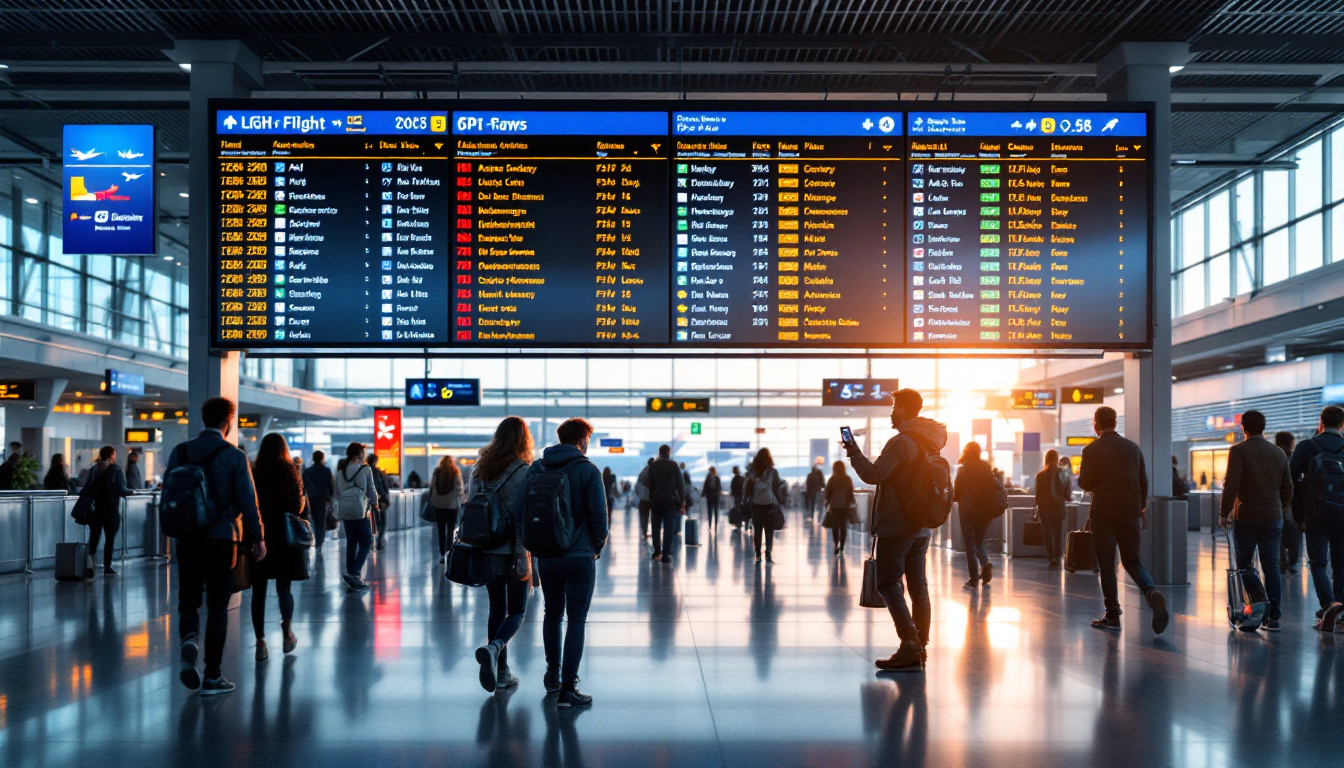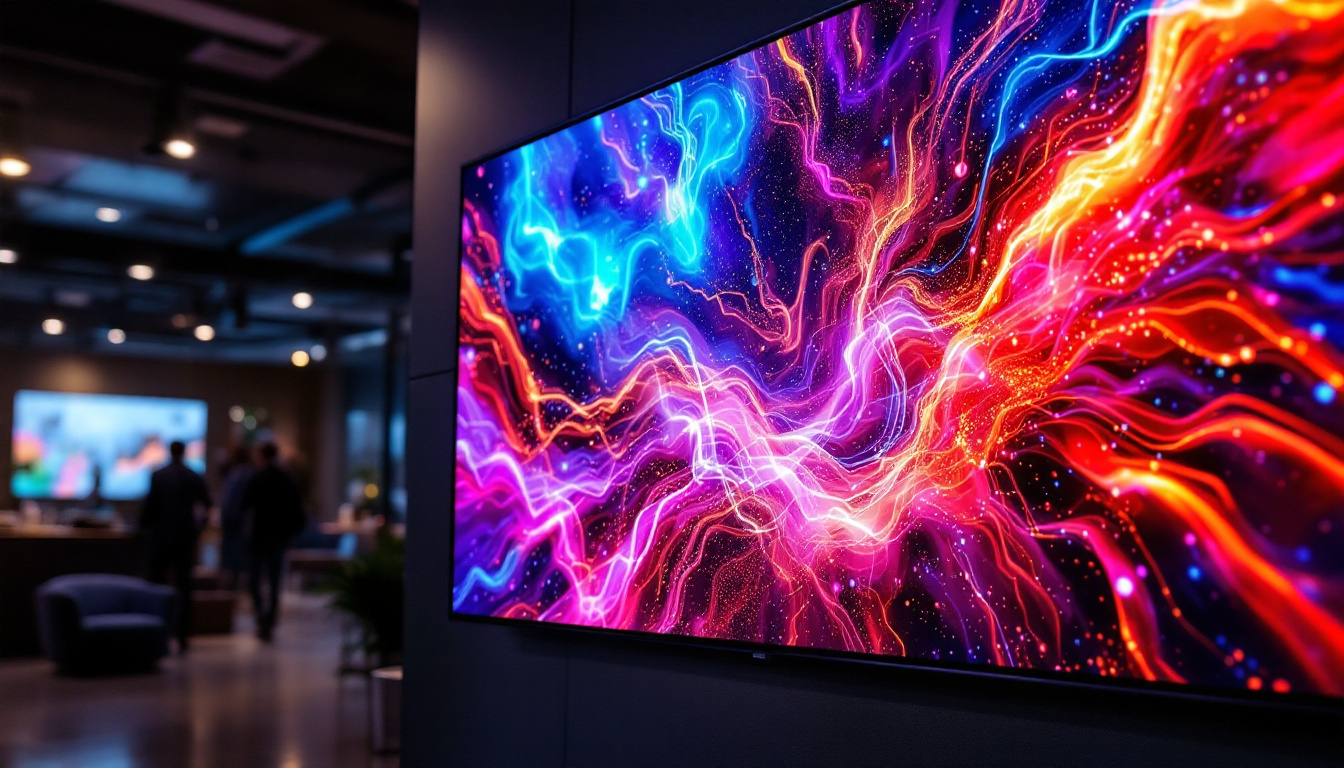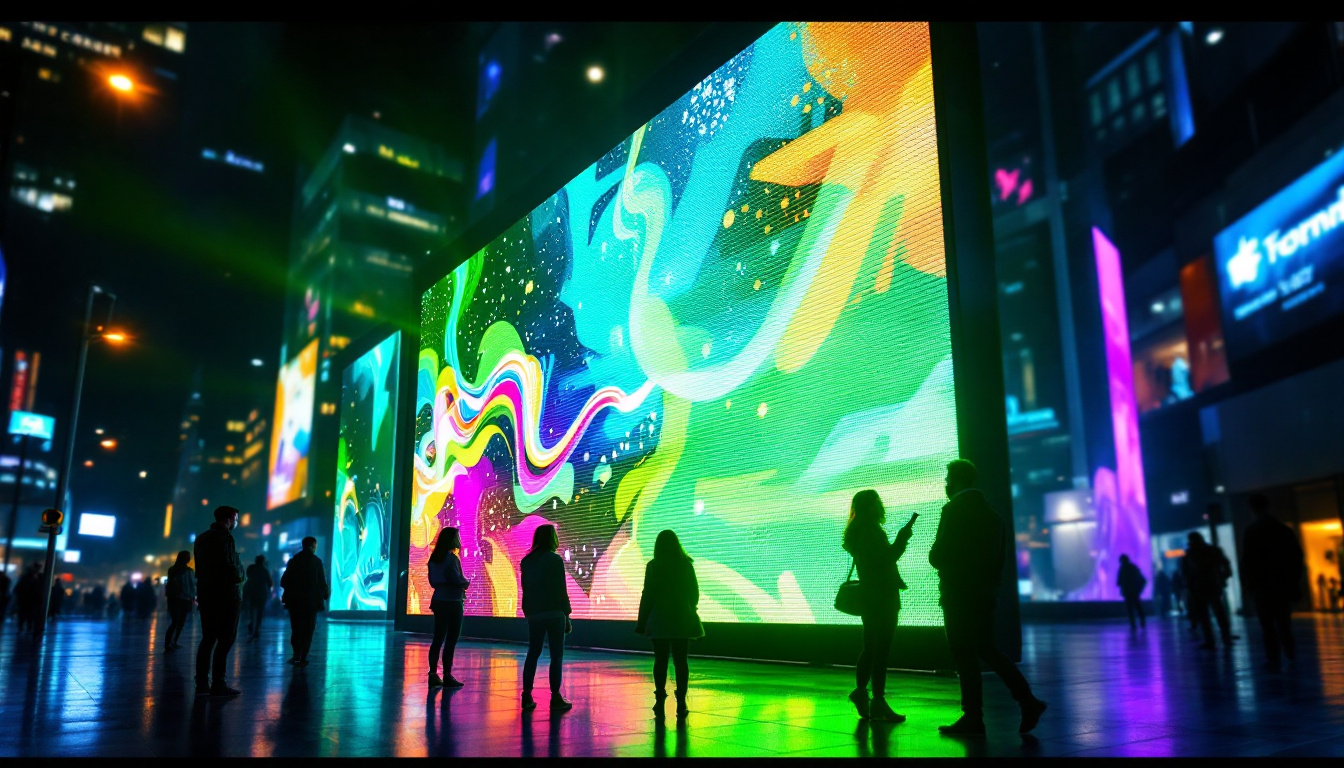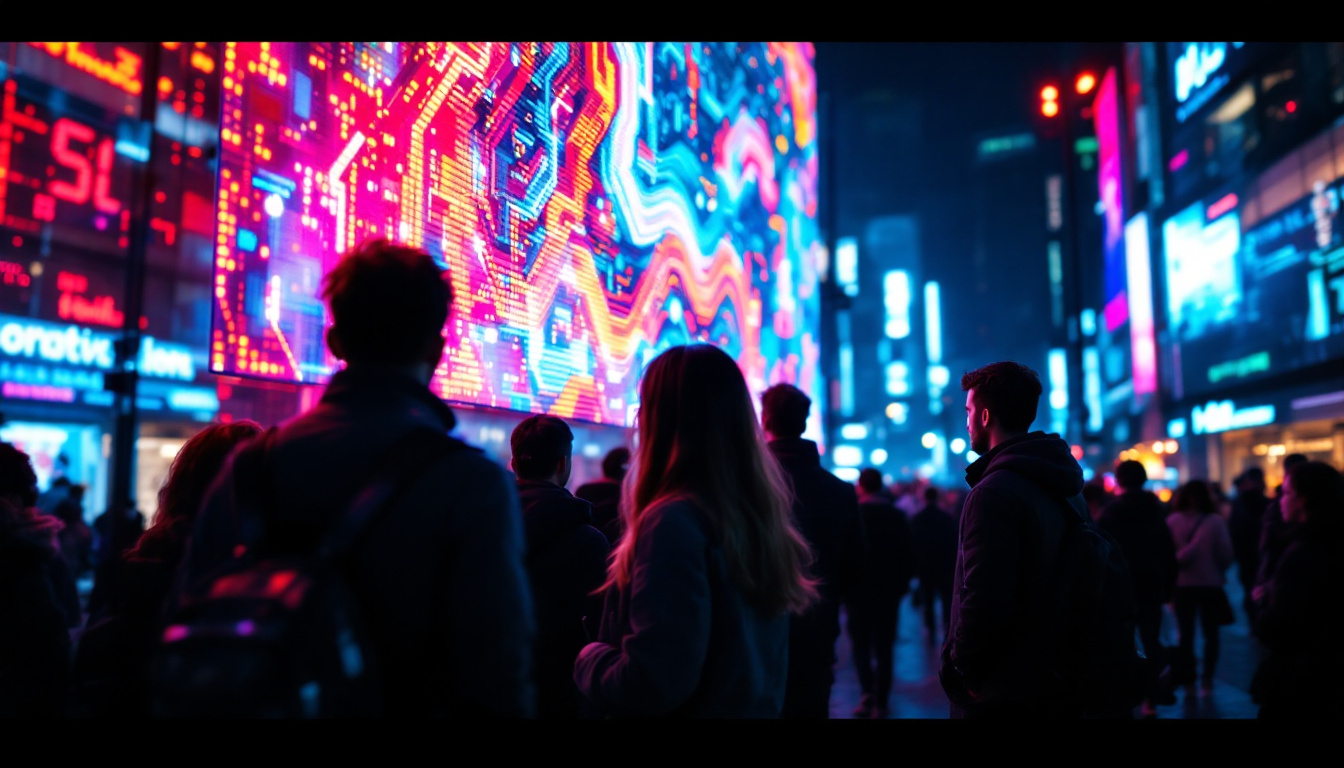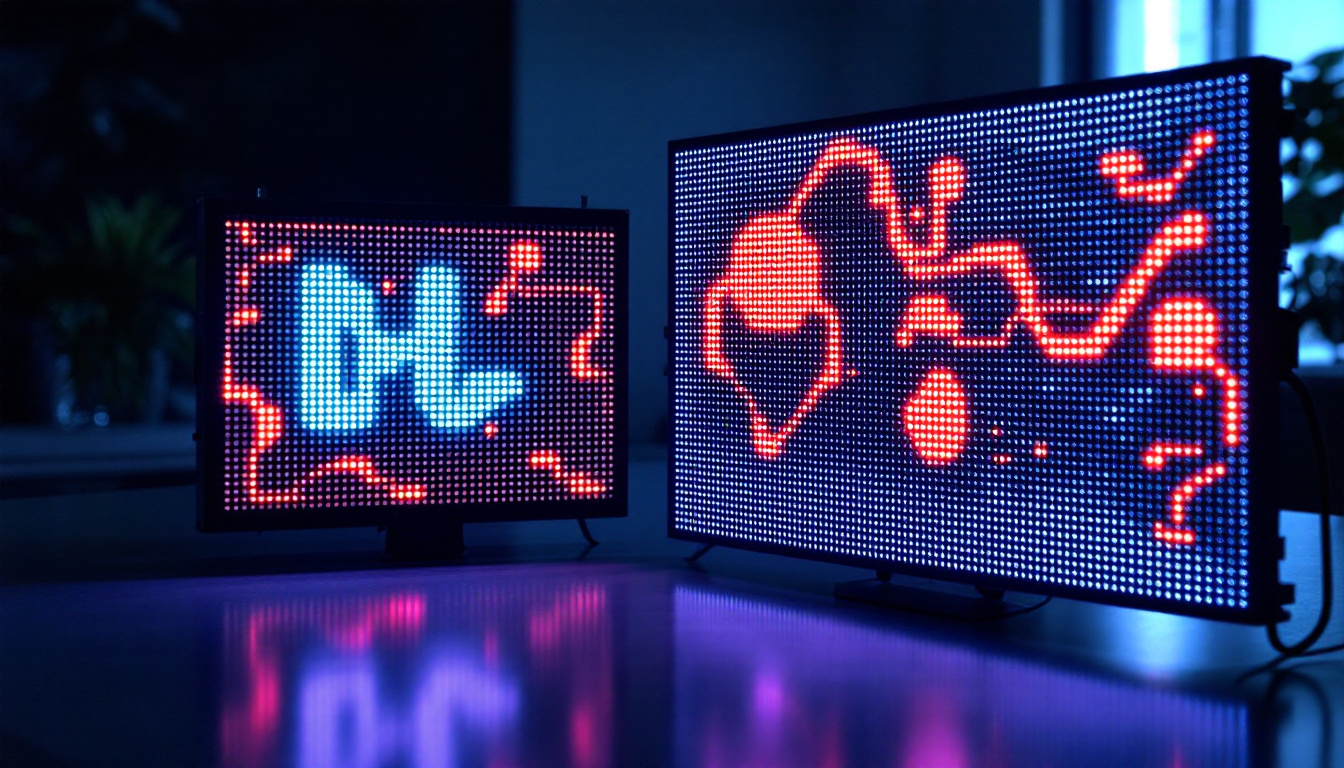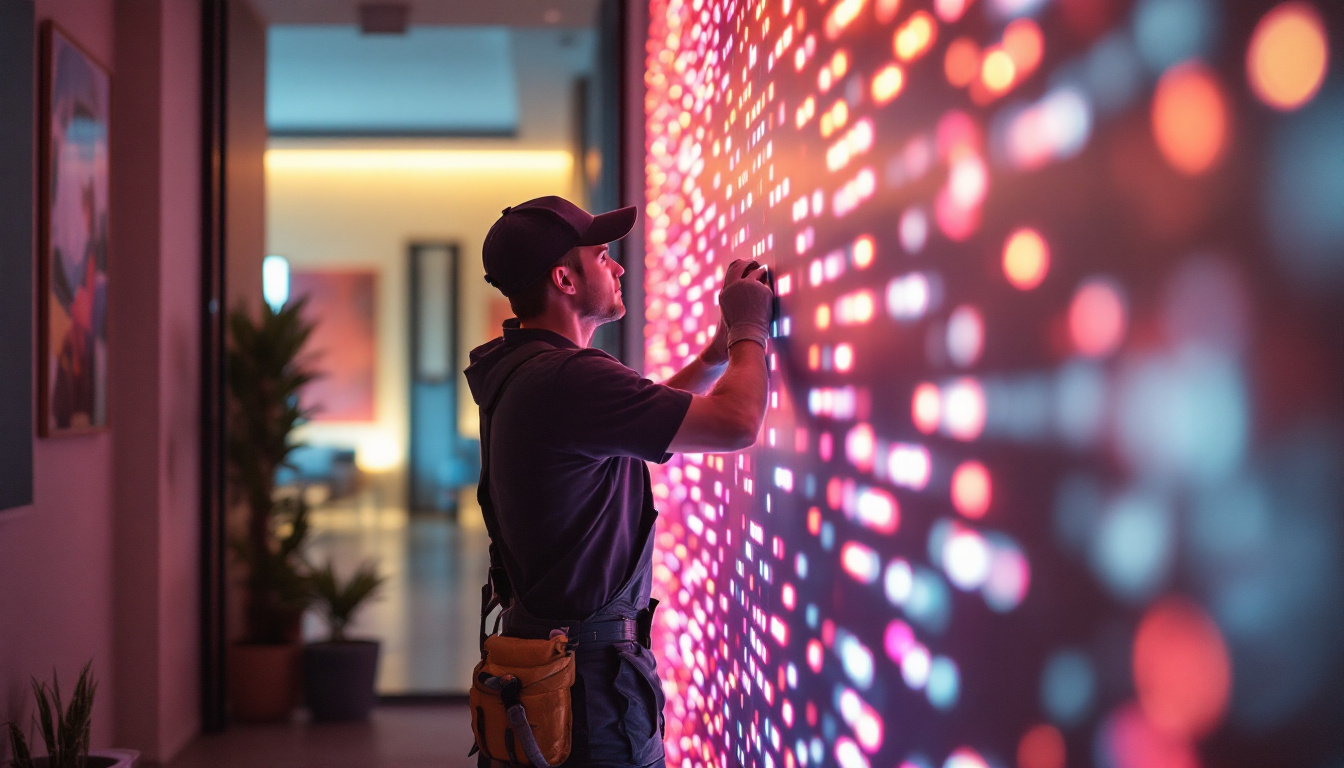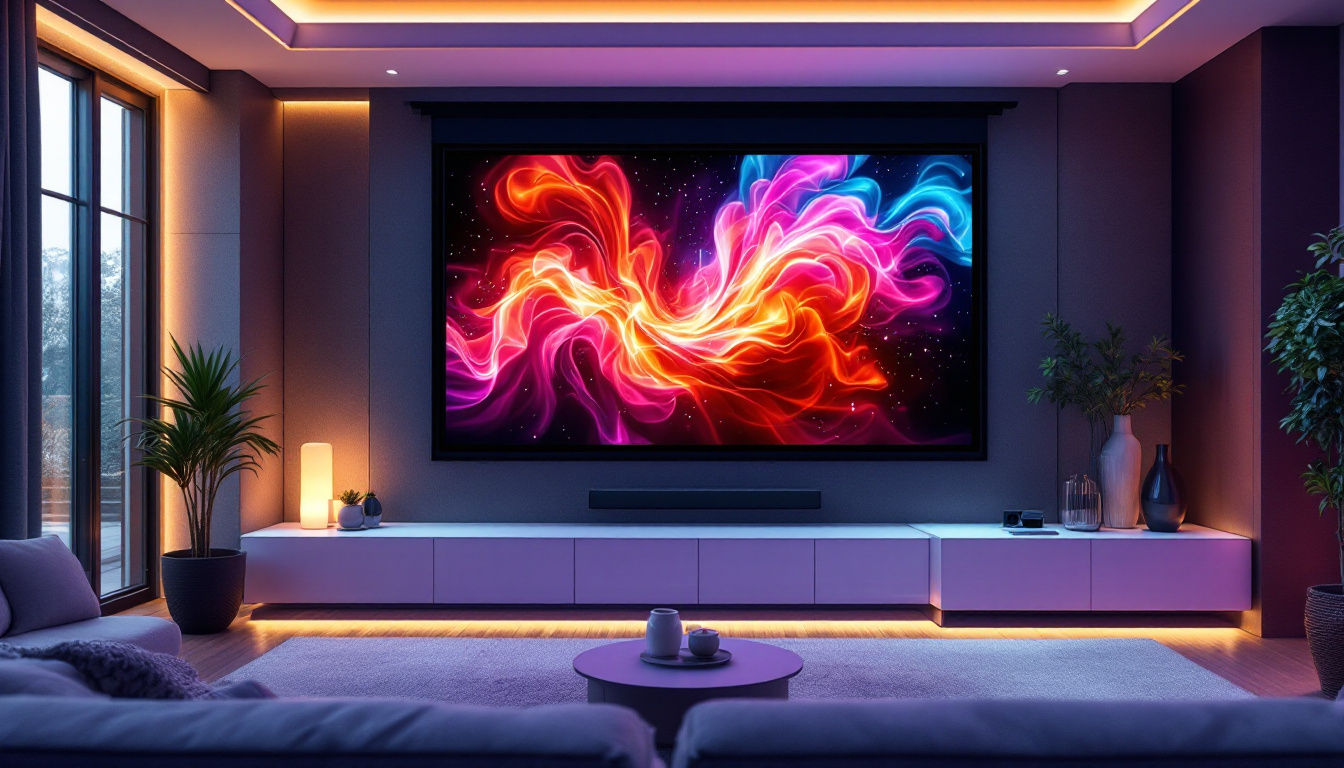Introduction to FIDS
The Flight Information Display System (FIDS) is a crucial component in modern airports and transportation hubs. It serves as the primary means of communication between the airport and passengers, providing real-time updates on flight schedules, gate changes, delays, and cancellations. With the rapid advancements in technology, the traditional methods of displaying this information have evolved significantly, leading to the widespread adoption of LED displays.
LED displays have revolutionized the way flight information is presented, offering numerous advantages over older technologies such as LCD and projection systems. This article delves into the intricacies of FIDS, focusing on the role of LED displays in enhancing passenger experience and operational efficiency.
One of the standout features of LED displays is their exceptional visibility, which is particularly important in bustling airport environments where passengers are often on the move. The bright, vibrant colors and high contrast ratios of LED screens ensure that information is easily readable from a distance, even in brightly lit areas. Additionally, these displays can be configured to show multiple lines of information simultaneously, allowing for a more comprehensive overview of flight statuses without overwhelming the viewer. This capability is especially beneficial during peak travel times when the volume of information being communicated is at its highest.
Moreover, the integration of LED displays with advanced software systems allows for dynamic content updates and customization. Airports can tailor the information displayed based on real-time data feeds, ensuring that passengers receive the most accurate and timely updates. This adaptability extends beyond just flight information; airports can also use these displays for advertising, emergency announcements, and wayfinding assistance, creating a multifunctional tool that enhances the overall airport experience. The ability to change the content quickly and efficiently means that airports can respond to unexpected situations, such as sudden weather changes or operational disruptions, with minimal delay, thereby improving passenger satisfaction and trust in the airport’s communication systems.
Understanding FIDS Components
Core Elements of FIDS
A typical FIDS comprises several core components that work together to deliver accurate and timely information. These include data management systems, display hardware, and communication networks. Each component plays a vital role in ensuring that passengers receive up-to-date information about their flights.
The data management system is responsible for collecting, processing, and disseminating flight information from various sources, including airlines, air traffic control, and airport operations. This data is then transmitted to the display hardware, which presents the information in a user-friendly format. The communication network connects these components, enabling seamless data flow and real-time updates.
In addition to these core components, FIDS also incorporates advanced software solutions that enhance the functionality of the system. For instance, predictive analytics can be employed to anticipate delays based on historical data and current weather conditions, allowing airports to proactively inform passengers. Furthermore, integration with mobile applications provides travelers with the ability to receive notifications on their smartphones, ensuring they are always in the loop, even when they are away from the terminal.
Types of Displays Used in FIDS
While LED displays are the most common type used in FIDS, other display technologies also play a role. These include Liquid Crystal Displays (LCDs), projection systems, and even traditional flip boards. However, LED displays have emerged as the preferred choice due to their superior visibility, energy efficiency, and durability.
LED displays can be found in various sizes and configurations, from large video walls in terminals to smaller screens at gates and check-in counters. Their versatility allows airports to customize their FIDS according to specific needs and passenger traffic. Moreover, the ability to display dynamic content, such as animations or real-time updates, enhances the overall passenger experience by making the information more engaging and easier to digest. Additionally, some airports are exploring the use of augmented reality (AR) displays that can provide interactive information, guiding passengers through the airport and improving navigation.
The Advantages of LED Displays in FIDS
Enhanced Visibility and Readability
One of the most significant advantages of LED displays is their superior visibility. Unlike traditional displays, LED screens can be viewed clearly from a distance and in various lighting conditions. This is particularly important in busy airport environments where passengers may be rushing to catch their flights.
LED technology provides high contrast ratios and vibrant colors, making it easier for passengers to read flight information quickly. This enhanced readability reduces confusion and helps passengers make informed decisions about their travel plans. Additionally, the fast refresh rates of LED displays ensure that information is updated in real-time, allowing for immediate communication of any changes to flight schedules, gate assignments, or boarding times. This capability is crucial in maintaining a smooth flow of passenger traffic and minimizing the stress that often accompanies air travel.
Energy Efficiency and Longevity
Another advantage of LED displays is their energy efficiency. Compared to traditional display technologies, LEDs consume significantly less power, resulting in reduced operational costs for airports. This energy efficiency is not only beneficial for the environment but also helps airports save on electricity bills.
Moreover, LED displays have a longer lifespan than other types of screens, often lasting up to 100,000 hours or more. This longevity reduces the need for frequent replacements and maintenance, further contributing to cost savings for airport operators. The durability of LED technology also means that these displays can withstand the rigors of a bustling airport environment, including exposure to varying temperatures and humidity levels. As a result, airports can rely on LED displays to maintain consistent performance over time, ensuring that passengers receive accurate and timely information without interruption.
In addition to their practical benefits, LED displays can also enhance the overall aesthetic of an airport. With the ability to create dynamic visuals and animations, these screens can be used to showcase advertisements, airport promotions, or even local attractions, enriching the passenger experience. The integration of LED technology into airport design not only serves functional purposes but also contributes to a modern and engaging atmosphere that reflects the innovation and efficiency of contemporary air travel.
Implementing LED Displays in FIDS
Design Considerations
When implementing LED displays in a FIDS, several design considerations must be taken into account. The layout of the displays should facilitate easy viewing from various angles and distances. This often involves strategic placement in high-traffic areas, such as departure and arrival halls, to ensure maximum visibility.
Additionally, the size and resolution of the displays should be chosen based on the expected passenger volume and the amount of information that needs to be displayed. High-resolution displays are essential for conveying detailed information, while larger screens can accommodate multiple flight updates simultaneously.
Integration with Existing Systems
Integrating LED displays with existing FIDS infrastructure is a critical step in the implementation process. This involves ensuring compatibility with data management systems and communication networks. A seamless integration allows for real-time updates, ensuring that passengers receive the most accurate information available.
Furthermore, airports may need to invest in software solutions that facilitate the management of flight data and display content. This software should be user-friendly and capable of handling various data formats to ensure smooth operation.
Challenges and Considerations
Maintenance and Support
While LED displays offer numerous advantages, they are not without challenges. Maintenance and support are critical aspects that airport operators must consider. Regular maintenance is essential to ensure that displays function correctly and continue to provide accurate information.
Airports should establish a maintenance schedule that includes routine checks, cleaning, and software updates. Additionally, having a dedicated support team in place can help address any issues that arise promptly, minimizing downtime and ensuring a seamless passenger experience.
Cost Implications
Implementing LED displays in a FIDS can involve significant upfront costs. These expenses include the purchase of display hardware, installation, and software integration. However, the long-term benefits, such as reduced energy costs and lower maintenance expenses, often outweigh these initial investments.
Airports should conduct a thorough cost-benefit analysis to determine the viability of LED displays in their FIDS. This analysis should consider factors such as passenger volume, operational costs, and the potential for increased passenger satisfaction.
The Future of FIDS and LED Technology
Emerging Trends
The future of Flight Information Display Systems is poised for further transformation as technology continues to advance. Emerging trends such as artificial intelligence (AI) and machine learning are beginning to play a role in enhancing FIDS functionality. These technologies can analyze passenger behavior and preferences, allowing for more personalized information delivery.
Additionally, the integration of mobile technology is becoming increasingly important. Many airports are exploring ways to sync FIDS with mobile applications, enabling passengers to receive flight updates directly on their smartphones. This integration not only enhances convenience but also reduces congestion at information desks.
Sustainability Initiatives
As the focus on sustainability grows, airports are increasingly looking for ways to reduce their environmental impact. LED displays, with their energy efficiency and longevity, align well with these sustainability initiatives. Furthermore, airports are exploring the use of recycled materials in display manufacturing and installation processes.
Future developments may also see the incorporation of solar-powered LED displays, further minimizing energy consumption and contributing to greener airport operations.
Conclusion
The Flight Information Display System plays a vital role in enhancing the passenger experience at airports. With the integration of LED displays, airports can provide real-time, accurate, and visually appealing information to travelers. The advantages of LED technology, including enhanced visibility, energy efficiency, and longevity, make it the preferred choice for modern FIDS.
As airports continue to evolve and adapt to changing passenger needs, the implementation of LED displays will remain a key focus. By addressing challenges such as maintenance, cost implications, and integration with existing systems, airports can ensure that their FIDS remains effective and reliable.
Looking ahead, the future of FIDS is bright, with emerging technologies and sustainability initiatives set to shape the way flight information is delivered. As the industry embraces innovation, passengers can expect an increasingly seamless and informative travel experience.
Discover LumenMatrix LED Display Solutions
Ready to elevate your airport’s Flight Information Display System with the latest in LED technology? Look no further than LumenMatrix, a leader in innovative LED display solutions. Our extensive range of products, from Indoor and Outdoor LED Wall Displays to specialized solutions like Vehicle LED Displays and LED Sports Displays, are designed to captivate and inform travelers effectively. Embrace the future of visual communication with LumenMatrix and ensure your FIDS not only meets but exceeds passenger expectations. Check out LumenMatrix LED Display Solutions today and transform your airport’s passenger experience.

